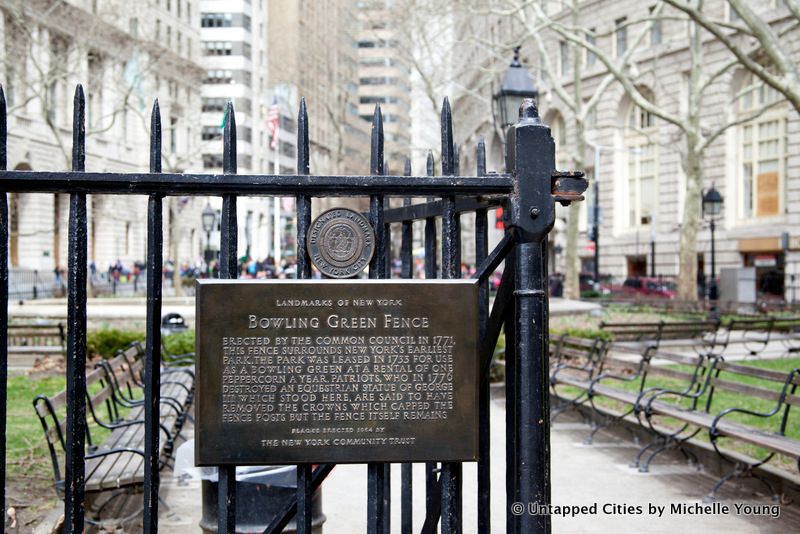NYC's Long-Awaited Davis Center Opens in Central Park
A stunning new facility at Harlem Meer opens to the public this weekend!


The Declaration of Independence located at the New York Public Library. Photo by Jonathan Blanc / NYPL.
On July 9, 1776, a copy of the Declaration of Independence was delivered to George Washington’s headquarters at Number One Broadway.
At 6pm that evening Washington ordered several of the city brigades to gather on the Common (now City Hall Park) for a public reading of the Declaration. In Washington’s recorded orders from that day the following was entered:
“The General hopes this important event will serve as fresh incentive to every officer and soldier to act with fidelity and courage as knowing that now [the] peace and safety of his country depends (under God) solely on the success of our arms.”
Clearly it worked. After the reading, an angry mob of New Yorkers charged down Broadway to literally and figuratively dethrone King George III. Their sites were set on a two-ton lead statue of the monarch installed in the center of Bowling Green Park only six years prior. The statue was commissioned by the New York State General Assembly in 1766, sculpted by Joseph Wilton and modeled after a famous sculpture of Roman Emperor Marcus Aurelius which sat on the Capitoline Hill in Rome (now in the Capitoline Museum).
Lieutenant Isaac Bangs wrote about the statue and Bowling Green in his journal entry dated April 14, 1776:
“In this, near the Fort, is the Equestrian Statue of King George III a Present from himself to this City. The design was in imitation of one of the Roman Emperors on Horseback. The Man George is represented about one third larger than a Natural Man; the Horse, in proportion, both neatly constructed of Lead gilt with Gold raised on a Pedestal of White Marble, about 15 feet high, enclosed with a very elegant Fence about 10 feet high… the enclosure was oval, containing about a quarter of an acre of beautiful green.”
Once the patriotic crowd reached the park they pulled King George down from his pedestal, decapitated him, broke him and his horse into pieces and loaded the largest parts on a cart headed to the East River. There the statue remains were loaded on a boat to Norwalk, CT where they were put onto oxcarts and brought over to Litchfield, CT. Eventually the lead was melted down to make roughly 42,088 bullets used by the Americans against the British. According to the Journal of the American Revolution, some of the statue pieces where scavenged on their way from Norwalk to Litchfield and pieces started popping up all across Connecticut about 50 years later. The chart below shows where some of those pieces are:
King George’s head has its own fascinating story. Once lobbed off it was sheared clean of its nose and then shot by the patriots with a musket bullet. Eventually it was put on a spike placed outside of Moore’s Tavern up by Fort Washington (now Washington Heights). The Journal of the American Revolution cites that British Captain John Montresor immediately sent a soldier to steal the head and bury it in the Bronx for safekeeping. When Montresor arrived in New York he recovered the head personally and had it sent back to England. It was later confirmed by former Massachusetts Governor Thomas Hutchinson that the head made it safely to the Estate of the late Charles Townshend (remember the Townshend’s Act from history class?). Lady Townshend took to showing it off to her guests as “an instance of American loyalty.” We can only assume she was being sarcastic.
The statue’s pedestal remained in Bowling Green Park as a reminder of our new country’s past oppression but after the War of 1812, Americans were sick of the British, so it was dismantled in 1818.

You can hear this story and other fascinating facts about Bowling Green Park and lower Manhattan on The Remnants of Dutch New Amsterdam, Tracing the Castello Plan tour offered by Untapped Cities.
Next, read Bowling Green in Manhattan’s South Ferry, The Oldest Public Park in NYC and History of the Revolutionary War Submarine The Turtle, First Used in Combat in NYC.
Subscribe to our newsletter